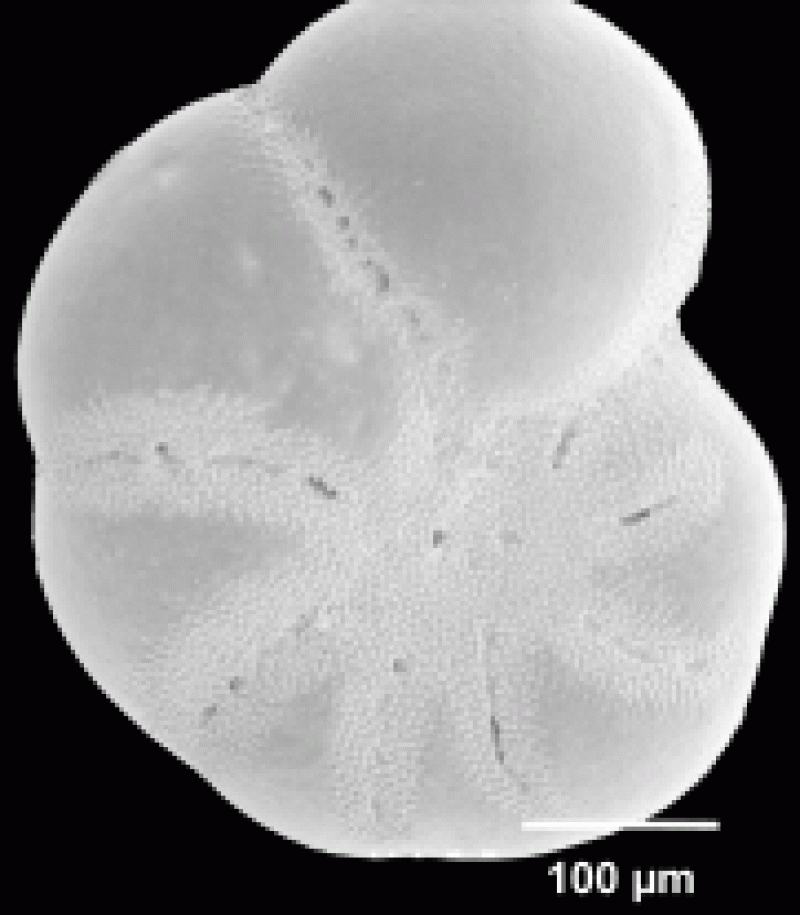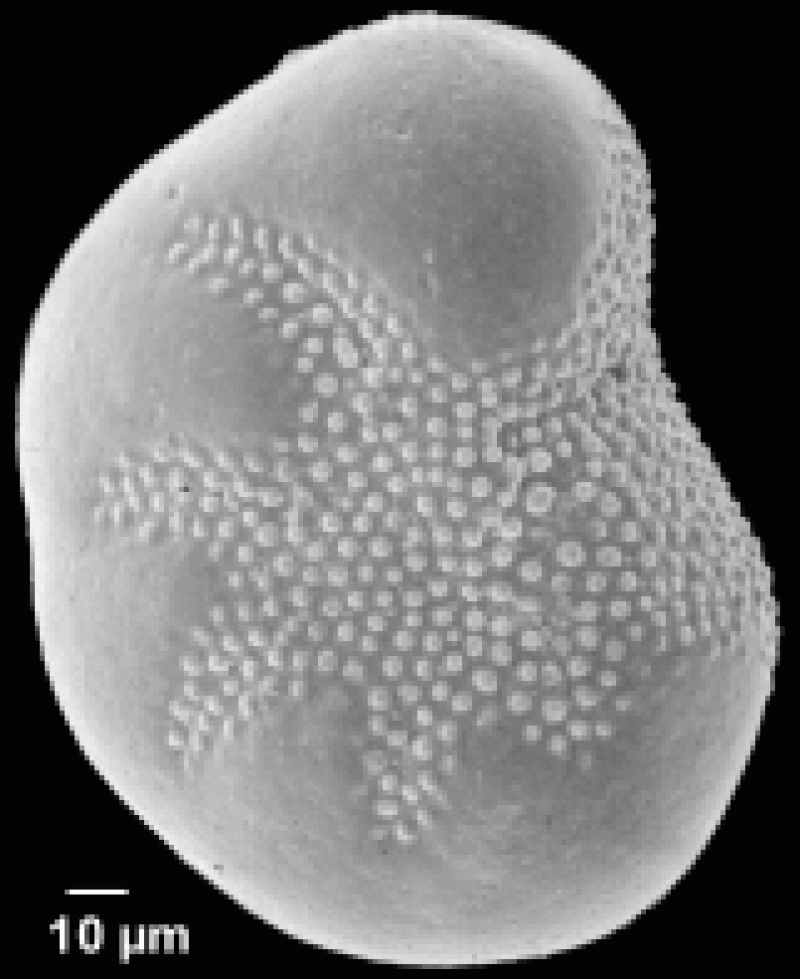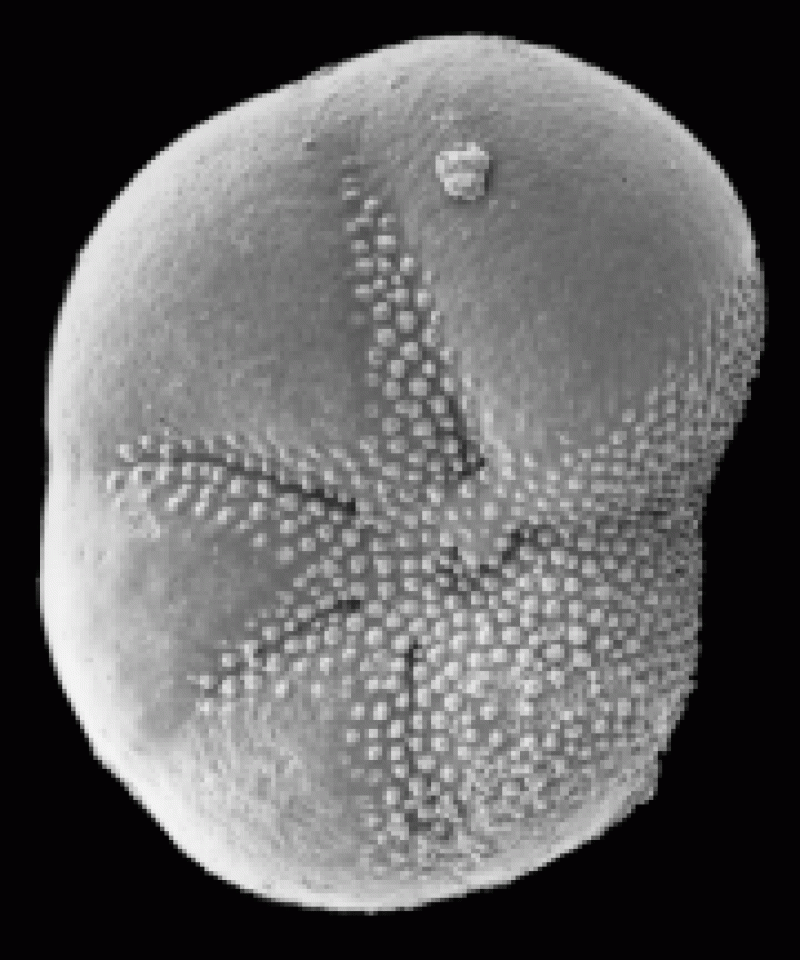Elphidium subarcticum
Elphidium subarcticum (Cushman 1933)
Elphidium subarcticum Cushman 1944, p 27 pl 3 figs 34a,b,35; Buzas 1966, p 585-594 pl 92 figs 7-10; Buzas 1985, p 1087 figs 8.1, 8.2.
E.albiumbilicatum (Weiss). Knudsen 1971, p 268 pl 10 figs 15-19, pl 19 figs 4-8..
E. magellanicum Heron-Allen and Earland 1932, p 440 pl 16 figs 26-28.
E. frigidum Cushman. Buzas et al 1985, p 1084 figs 7.3, 7.6.
E. halandense Brotzen 1943

- Adult specimen, side view.
- Collected: summer 1991, RV Akademik Karpinski, Kara Sea (off northern tip of Novaya Zemlya), 70mwd, modern mud
- Rose Bengal stained

- Juvenile specimen, side view.
- Collected: summer 1991, RV Akademik Karpinski, Kara Sea (off northern tip of Novaya Zemlya), 70mwd, modern mud
- Rose Bengal stained.

- Juvenile specimen, side view.
- Collected: Aug. 1991, RV Dalnie Zelentsy, Franz Josef Land sounds, water depth uncertain (40-140m), modern mud
Remarks:
Common for the Arctic shelf, typically in shallow areas. Often found attached to algae and sedentary organisms or shell detritus. Has well pronounced sutural pores (circular to elongated) and bands of granular calcite all along the sutures. Granules are possibly used for cracking diatoms (see also E.bartletti). In brackish-water habitats typical E.subarcticum grades into E.albiumbilicatum, which has granulation bands tapering toward periphery. We believe that E.frigidum and E.magellanicum are also grades of E.subarcticum having more lobate periphery, less granulation, and sometimes fine striae tangential to final sutures. The latter forms mostly inhabit agile waters with normal salinities. Moreover, in these habitats overgrown specimens of E.subarcticum (>0.5mm) may have double rows of pores on final sutures and are therefore difficult to distinguish from Elphidiella arctica. E.halandense is probably a synonym of E.subarcticum sensu stricto.
